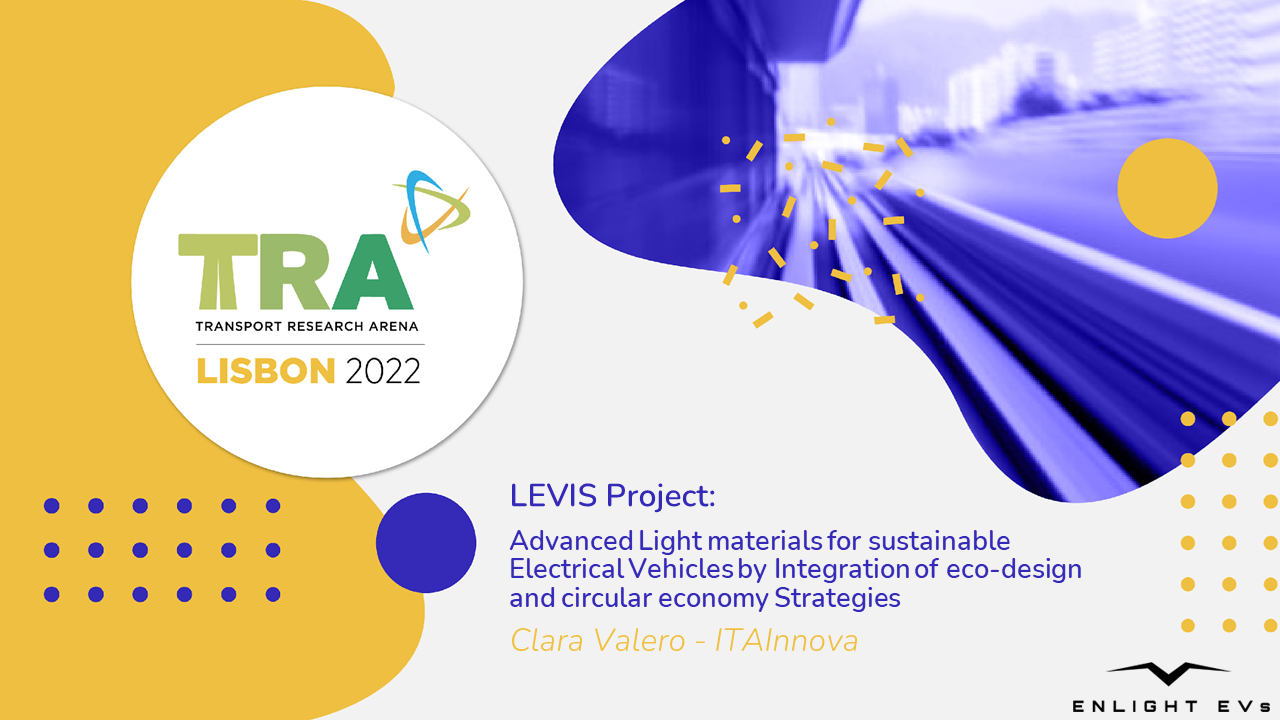The LEVIS project was presented at the largest European Research and Technology event on transport and mobility, the Transport Research Arena (TRA) Conference 2022 in Lisbon in November 2022.
Under the motto “Moving together – reimagining mobility worldwide”, TRA 2022 provided a platform for revolutionary developments and innovative strategies while aiming to secure knowledge and experiences in European transport research and innovation.
LEVIS participated at TRA 2022 in the framework of Invited Session 9 “Improved EV efficiency, range and environmental impact through innovations in lightweight materials”. The session was organised by the recently formed automotive cluster EnLightEVs, consisting of EU projects LEVIS, ALMA, Fatigue4Light, FLAMINGo, and REVOLUTION.
Clara Valero, R&D Engineer at ITAINNOVA presented the LEVIS project and its activities to a large audience.
Topics covered were, among others:
- Lightweight EV component materials design and development
- Cost-effective manufacturing and assembly technologies
- Simulation methods for accurate failure and service life predictions and optimized designs
- End-of-life approaches for parts harvesting, reuse, repair and recovery
- Eco-design principles and application of Life Cycle Assessment and Life Cycle Cost tools
“With over 2,000 participants, 60 exhibitors and 600 speakers, TRA2022 was a great forum that gave LEVIS the perfect opportunity to reach a wide variety of stakeholders, including researchers, industry representatives and policymakers”
– Clara Valero
In addition, the conference gave the EnLightEVs projects the chance to meet for the first time face-to-face and to discuss future joint event participations and dissemination activities.

LEVIS is an EU project that aims to develop lightweight components for electric vehicles using eco-design and circular approaches. The LEVIS consortium – built by industrial and research partners from seven countries – envisages demonstrating the technical and economic feasibility of producing these components in three real-case demonstrators at a large scale: a suspension arm, a battery box set and a cross car beam.
